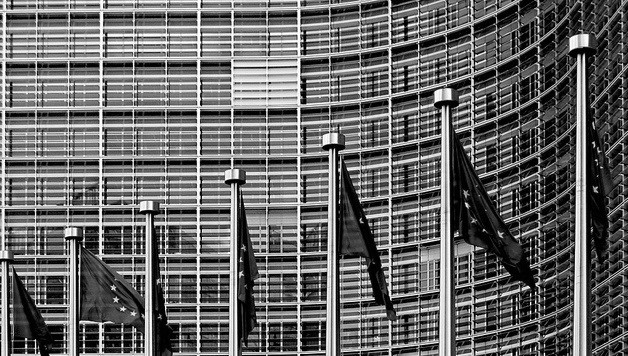On 5 July 2018, the Competition and Consumer Commission of Singapore (CCCS) announced that it had issued a proposed infringement decision against Grab Inc (Grab) and Uber Technologies, Inc (Uber) in relation to the sale of Uber’s Southeast Asian business to Grab. The decision follows the CCCS’ provisional finding that the sale led to a substantial lessening of competition in the market for ride-hailing platform services in Singapore (or “chauffeured point-to-point transport (CPPT) platform services”).
The CCCS’s announcement is of interest as it is one of the few recent instances of a competition regulator flagging the possibility of ‘unwinding’ an allegedly anti-competitive merger post-completion.
Background
Uber and Grab operated ride-hailing platform services in Singapore in competition with each other. Competition between the two rivals was characterised by heavy discounting through frequent promotions, to the significant benefit of consumers.
On 26 March 2018, and apparently without prior notification to the CCCS, Grab announced that it had acquired Uber’s Southeast Asian operations in consideration of Uber taking a 27.5% stake in Grab.
Four days later proposed interim measures directions were issued requiring the parties to (among other things) maintain their pre-transaction independent pricing policies and product options. This was the first time the CCCS had proposed interim measures directions on any business in Singapore.
This was on the basis that the CCCS had reasonable grounds for suspecting that section 54 of Singapore’s Competition Act (Act) had been infringed. Section 54 prohibits mergers that have resulted, or may be expected to result, in a substantial lessening of competition within any market in Singapore for goods or services. Section 54 is the Singaporean equivalent to section 50 of Australia’s Competition and Consumer Act 2010 (Cth), which is similar in wording.
The provisional findings of the CCCS
After noting that the merged entity was both able to, and in fact has, increased prices since the completion of the transaction (net of rider promotions and driver incentives), the CCCS highlighted four main factors in support of its provisional finding.
Uber would not have left the market in the absence of the merger
The ‘future with and without test’ is key to the assessment of whether a merger has (or would) substantially lessen competition. Under this test, the relevant regulator undertakes a comparison of a future in which the merger occurs, against a future in which the merger does not occur (or in this case – as the merger has already occurred – a comparison of the current state of affairs against that which would have prevailed had the merger not occurred).
Importantly, in this case the merger parties maintained that Uber had made an irreversible decision to exit the market, and that there was no scenario in which Uber will continue to operate in Singapore or the rest of Southeast Asia. This is significant because – if true – it means that the relevant ‘future without test’ is a future with no Uber anyway. In this scenario, the future with and without assessment would show that the likely state of competition with the merger would not be substantially less than it would be after Uber’s exit. This is often referred to as the ‘failing firm’ defence.
Interestingly, the CCCS states that it has uncovered evidence that Uber would not have left the Singapore market in the near to medium term in the absence of the merger, and would have either continued its operations or merged its Southeast Asian business with other potential buyers (who were not its current competitors in Singapore). This means that the ‘failing firm’ defence would not apply to the merger. Rather, as the CCCS found, the merger has “removed competition between the two closest prevailing competitors in the CPPT platform services market in Singapore”.
Taxi booking services pose an insufficient competitive constraint
According to the CCCS, taxi booking services hold less than 15% share of the market and were not considered to pose a sufficient competitive constraint to the parties.
Barriers to entry and expansion
The CCCS also referred to the importance of network effects contributing to high barriers to entry and expansion in the market for ride-hailing platform services. Network effects occur where increased usage of one product increases the value of another product (with credit cards being one prominent example – previously blogged about here).
As noted by the CCCS, “a ride-hailing platform that has built up high levels of usage is more attractive to new drivers and riders than a competitor with less usage whose offerings may otherwise be the same. The indirect network effect reinforces the incumbency of the existing players present in the market, and greatly increases the time and upfront expenditure needed for a new potential entrant to build up a driver network and rider network similar in scale and size to the parties.”
The CCCS found that Grab had imposed exclusivity obligations on taxi companies, car rental partners, and some of its drivers, limiting competitors’ access to drivers and vehicles and requiring new entrants to invest significant upfront capital to attract drivers and riders.
Barriers to expansion were also identified, including due to the higher cost of maintaining chauffeured private hire cars. Therefore, competitors may not be able to expand and compete effectively without a tie-up with a ride-hailing platform.
Strengthening the CCCS’s view on this point was the fact that it had received feedback from potential new entrants suggesting that without regulatory intervention, it would be difficult to attain a sufficient network of drivers/riders to provide effective competition to Grab.
In view of the above, the CCCS concluded that Grab would be able to raise fares and reduce service quality and innovation. The CCCS has received concerns about these matters and has received complaints from riders and drivers about price increases including fewer rider promotions and driver incentives post-merger.
No evidence of efficiencies
Finally, the CCCS noted that the parties had not shown that the transaction gives rises efficiencies that would outweigh the competitive harm. This is a reference to the Fourth Schedule to the Act, which provides that the section 54 prohibition does not apply where the economic efficiencies arising from the merger outweigh any adverse effects resulting from a substantial lessening of competition in the relevant market in Singapore.
In the CCCS’s view, the transaction was therefore likely to lead to a substantial lessening of competition.
Next steps
In addition to the possibility of unwinding the transaction, the CCCS has proposed a number of other proposed remedies. These include steps such as preventing Grab from raising its prices (by requiring Grab to maintain its pre-merger pricing algorithm and driver commissions) until competition is revived in the market, and removing exclusivity obligations and lock-in periods on drivers.
The CCCS is also proposing to impose financial penalties on the parties “as CCCS has found that they have carried the Transaction into effect despite having anticipated potential competition concerns, and caused an SLC in the ride-hailing platform services market in Singapore”. Interestingly, the CCCS’s investigations revealed that a mechanism to apportion such financial penalties had been provided for in the transaction documents.
The CCCS is inviting feedback about the proposed remedies until 19 July, after which time a final decision on remedies will be made.








